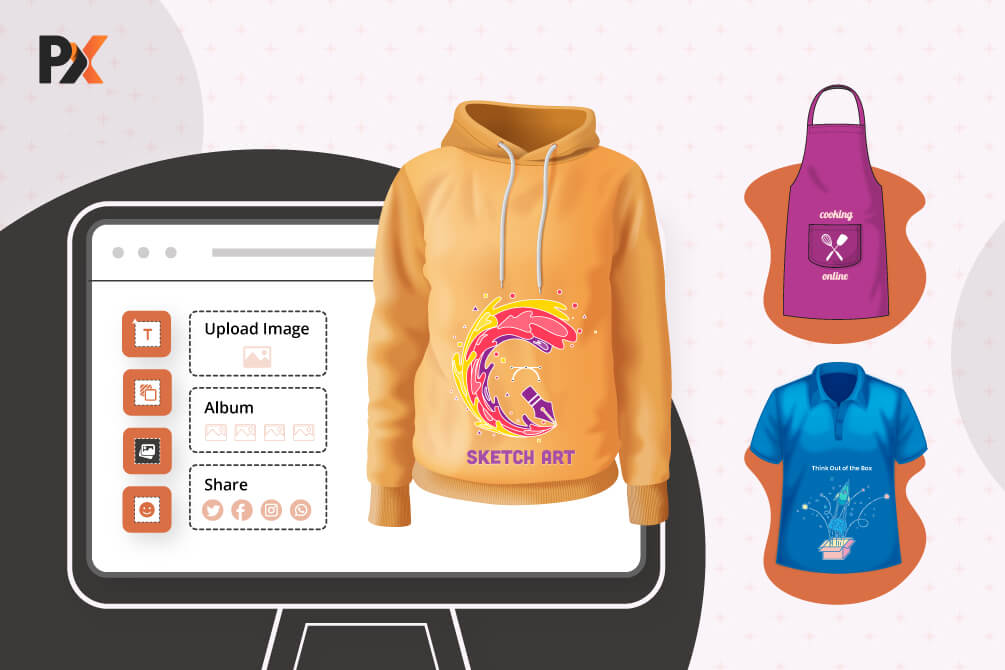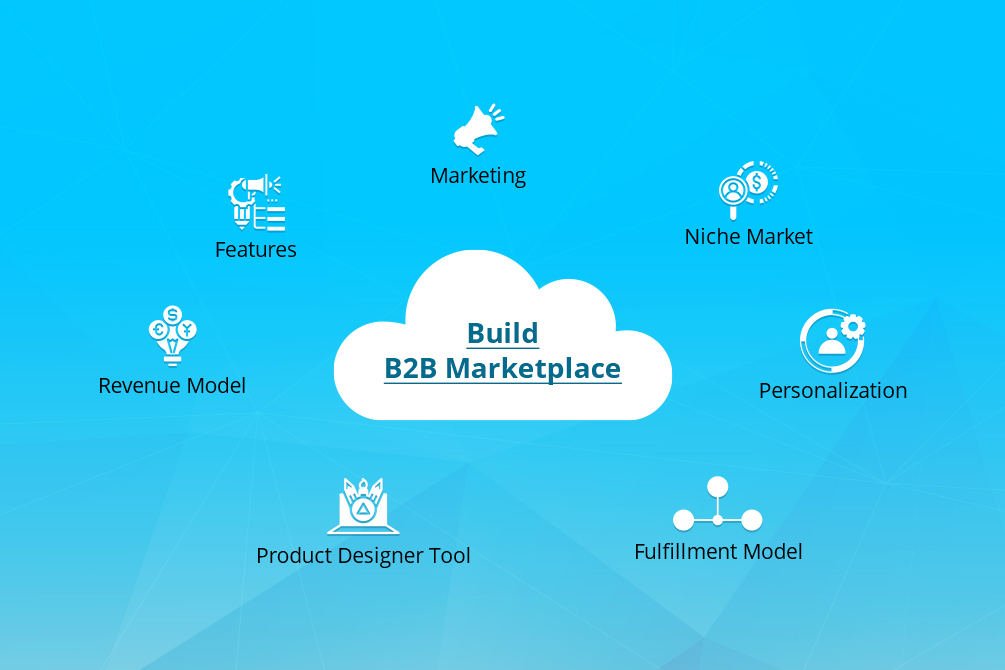Summary
When Dionna Dorsey randomly scribbled a first sketch while sitting in a restaurant, that’s when the idea of an online shop popped in her head.
Dionna is a graphic designer, creative director from Washington DC, and District of Clothing is her side project. Her online store is all about spreading positivity into the world by selling products with inspiring messages on custom hoodies, shirts, hats, and kid’s wear.
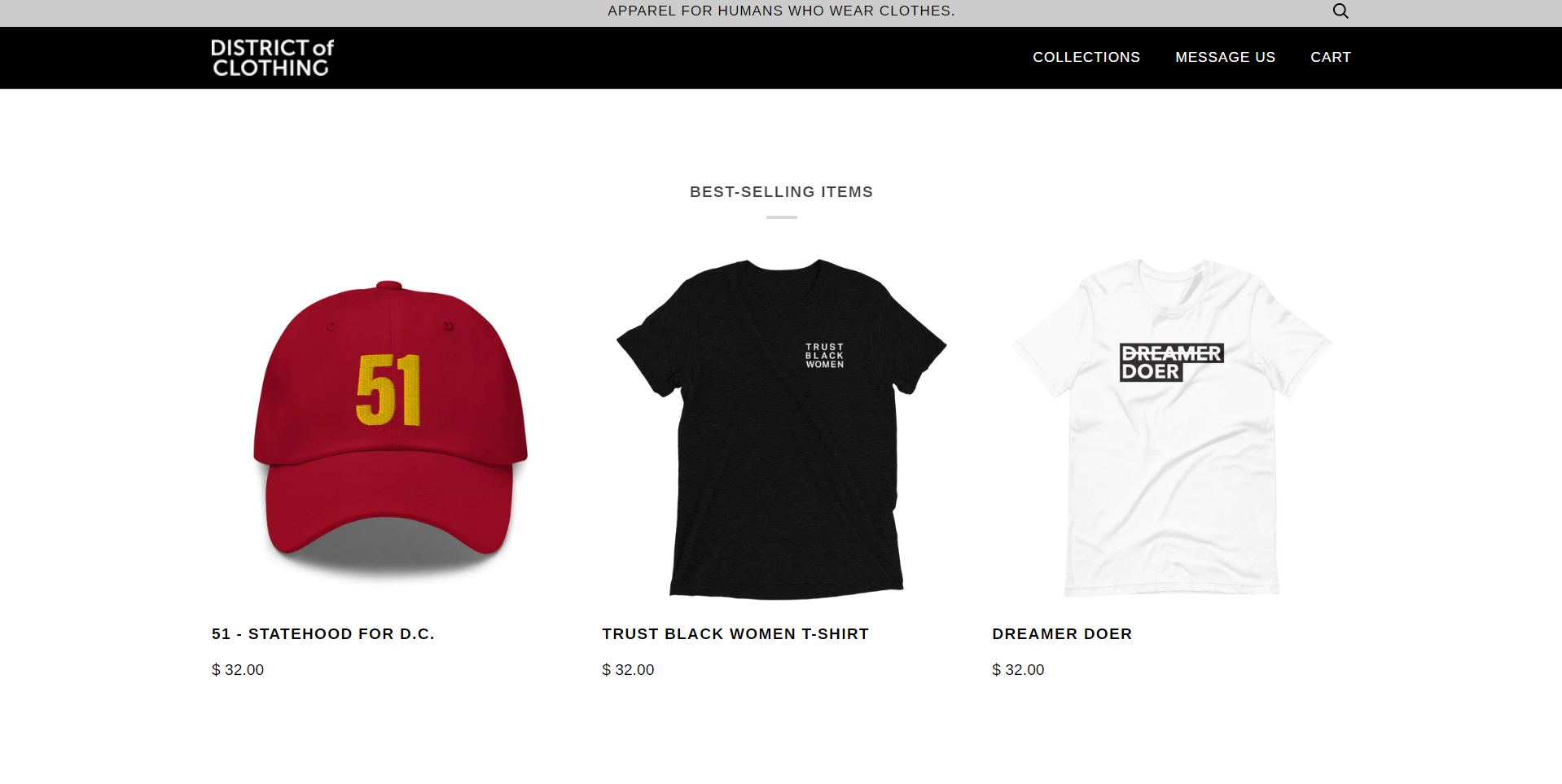
Two years after launching the store, Dionna finally saw her efforts pay off. Her website started getting lots of hits, and she was successful in building a lifestyle brand that people wanted to be a part of. The love that her brand gets from customers is inspiring her to make it a full-time project now.
District of Clothing is one of many successful ventures that is a great source of inspiration for entrepreneurs like you who wish to start their custom apparel shop. Running a custom apparel shop has become easier because of the various tools, platforms, and technologies at our disposal.
If you have got a great business idea and an entrepreneurial spirit, then this guide is all you need to embark on the journey to sell custom apparel online.
1. Plan Your First Collection
To sell custom apparel online, start by deciding what kind of apparel you want to sell.
You are a creative person who spotted a gap in the market and wants to fill it with your unique designs. Or maybe your business idea is born out as a solution to a need. Your head might be overflowing with ideas, but you cannot decide which one to choose for your business. That is where deciding a niche will help you.
A niche is a specialized market that attracts a specific audience. Because a niche focuses on a specific group of people, they are more likely to buy from your store against those generic/mainstream products that do not cater to their needs. For example, if your target audience is people who likes to stay fit or athletes, then your niche could be selling custom activewears.
It is important to define a niche, especially when you are just starting out. Trying to include multiple products or catering to everyone can be expensive and tricky.
Moreover, the niche is the first step in branding success. When you engage with a small and targeted group of people, you can focus on improving engagement and nurturing relationships with a more personalized approach. And that way, you can establish a loyal customer base.
For your better understanding, let’s look at the following example:
Many stores offer custom t-shirts, but very few stores target dads. The Dad shop is one such brand that features the best t-shirts, tank tops, long sleeve shirts, hoodies, sweatshirts, sweatpants, hats, and more. They cater to a specific demographic, and that helps them closely engage with their target audience. Even when you look at their Instagram account, they share relevant posts, which gets them a loyal community of 1.8 million followers.
So, how do you find your niche to create and sell clothes online?
Start by looking at current trends. Google trends is a public and free-to-use analytics database of all Google searches. The tool graphs out the popularity of any given search term and suggests related topics and queries too.
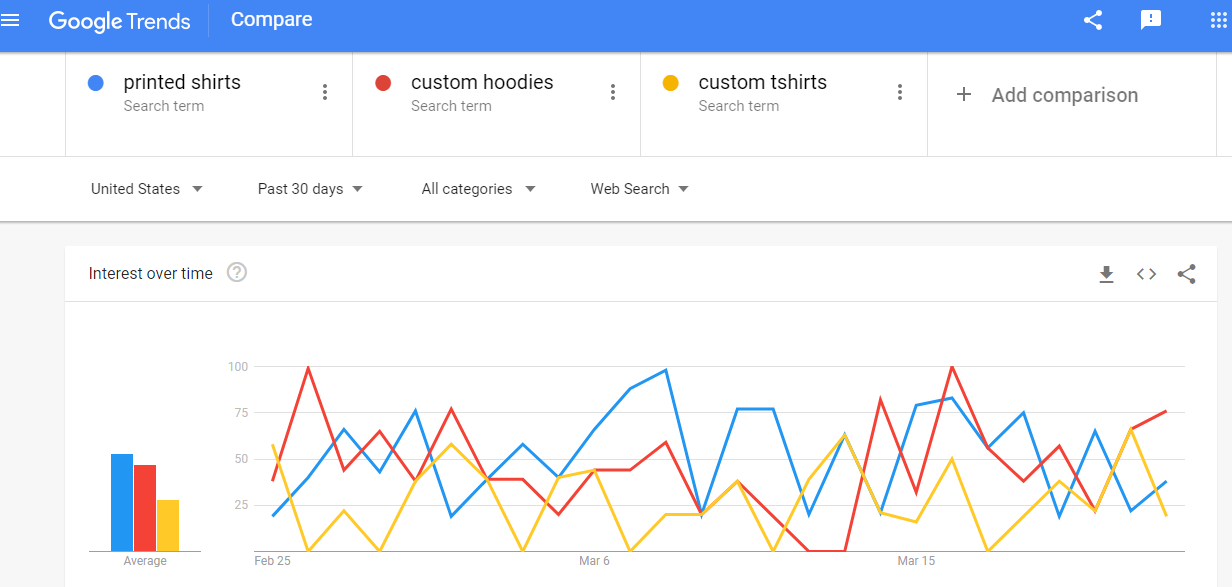
(Google Trends Guides You to Find Out the Popularity of Different Products)
Another tool that enables you to check the market trends and scan niche opportunities is SEMrush. With its tool, you can dive into a niche and understand the audience you want to target. Additionally, the tool makes it easy to evaluate the market size and benchmark the top competitors.
If you hold a particular interest in a product and would like to change that passion into a well-paying business, you can validate that idea using such tools.
Creating Designs
To create and sell clothes online, you would also want to get some inspiration for designs. If you are an artist who wants to design your clothes online and sell them, then you can create merchandise. If not, and you are wondering how to make custom shirts to sell, social media platforms and marketplaces will help you.
Merch by Amazon is a free platform where you can search for designs uploaded on Merch by Amazon based on keywords. Let’s say you want to know how to make your shirts to sell. I searched for the word ‘comic print shirts,’ and it gave me a list of products, including sweatshirts, t-shirts, etc.
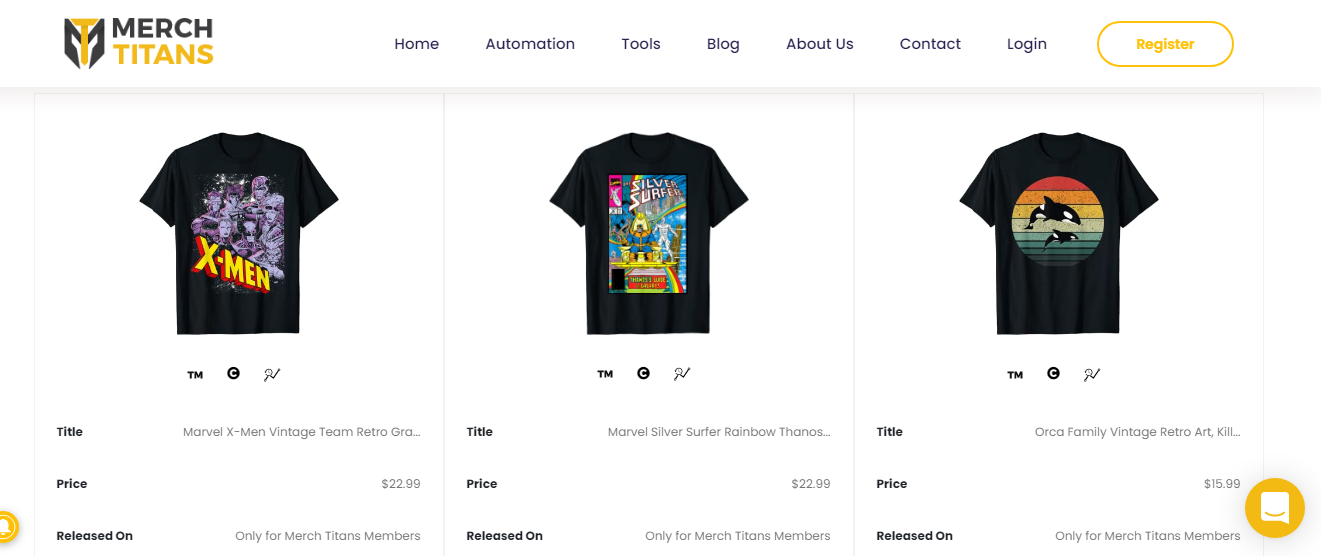
(Merch By Amazon Where You Can Search for Designs)
With Facebook, all you have to do is search for the keyword, and you will see the latest designs promoted on the platform.

(Facebook is An Excellent Source to Find Design Inspirations)
The same goes for finding designs on Pinterest. The only difference is that you will use ‘pins’ to gauge the designs. Moreover, with Pinterest, you get these different options like design, pattern, floral, etc., like in the below image.

(Pinterest is Another Platform Where You Can Look for Design Inspiration)
Additionally, a Product Design Tool helps you cater to the unique design requirements of every customer.
The tool allows customers to customize their products with ease.
They can choose the color, design, and even add text to make it truly their own. This level of personalization can make your customers feel more connected to your brand and improve their overall shopping experience.
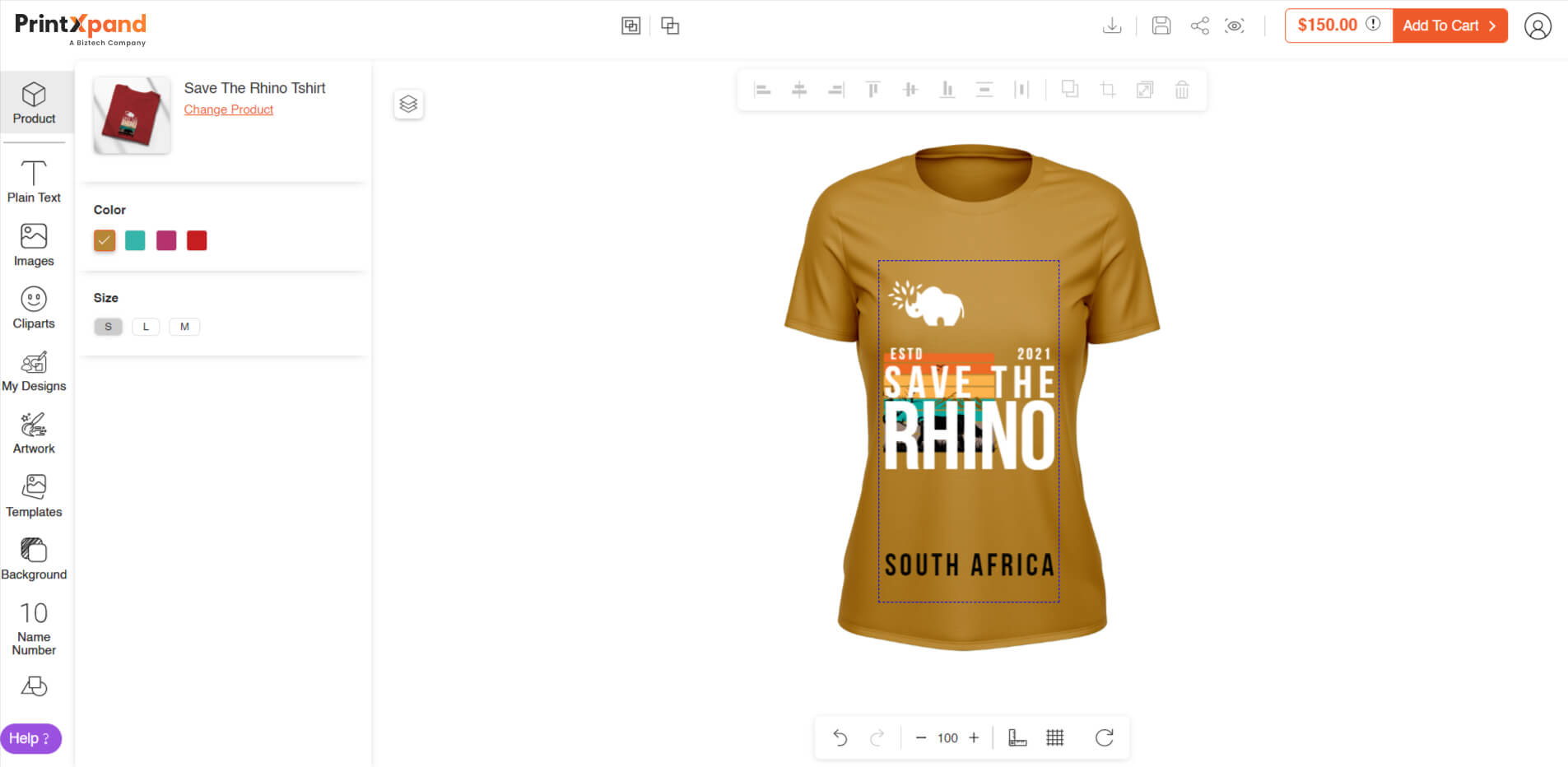
Secondly, a Product Design Tool can help reduce the workload on your end.
With customers designing their own products, you don’t have to worry about creating multiple variations of the same product.
This can save you time and resources, allowing you to focus on other aspects of your business.
2. Establish Web Presence
Well, it is obvious that you will need a functional website to sell custom clothing. Before we talk about building a web store, let’s sort out some basic requirements that you need to build an eCommerce website.
First is the company name. The idea is to find a name that is short, simple, and catchy. If you look at the names of big brands, you will realize that the shorter the better. It is memorable and costs less to print on materials. Once you decide on a name for your brand, it’s time to find a domain name. With tools like Google Domains, Namecheap, GoDaddy, or Hover, you can register your domain.
There are two approaches to start selling online. One is to get a ready-to-host web-to-print store, and another option is to build an eCommerce website. Let’s see both in detail.
A. Launch A Web-to-Print Store
There are a number of ready-to-host web-to-print stores available. You can launch your online store and start selling in less time and at a reasonable rate.
With a web-to-print store, you do not have to worry about the design or development aspect. You get a ready storefront that matches the requirements of your business and you are ready to sell custom clothing online.
At PrintXpand, our goal is to help businesses seamlessly manage with features like catalog management, product management, customer orders, printing methods, and more. Here are some features that will make it easy for you to sell custom apparel online
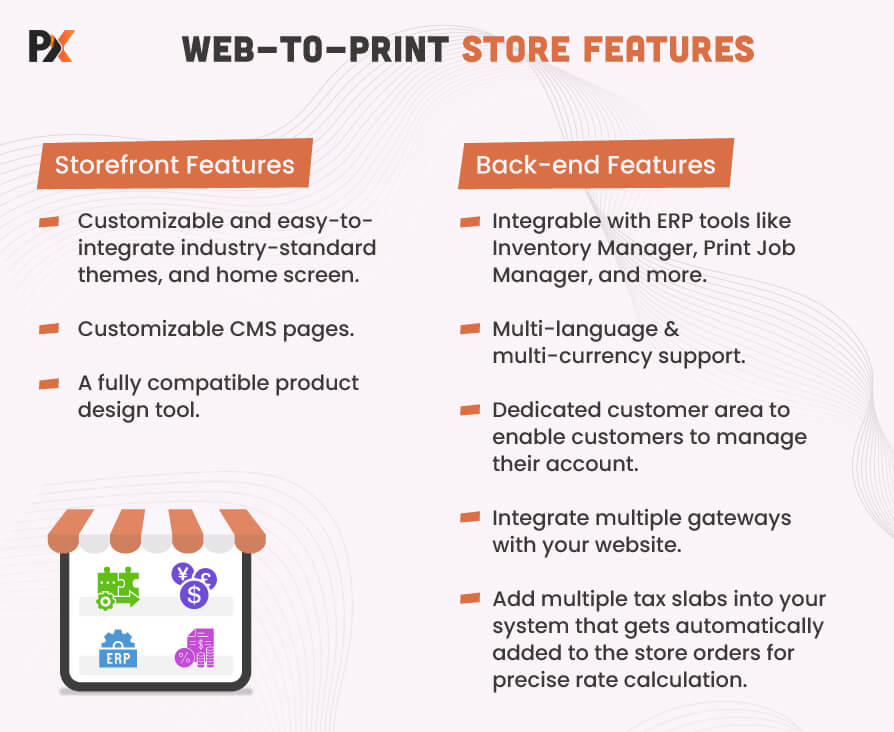
B. Allow Customization
You are passionate about designing your own clothes and selling online.
That’s great.
But, customers, today, expect brands to allow them a way to create their own designs. You can take your business a step further by implementing product customization.
Many eCommerce brands have been implementing product customization to enable customers to be a part of the creative process.
For instance, American clothing company Levi’s is putting the power of personalization directly into the hands of the customers. They introduced Future Finish, a new online customization experience available on their website.
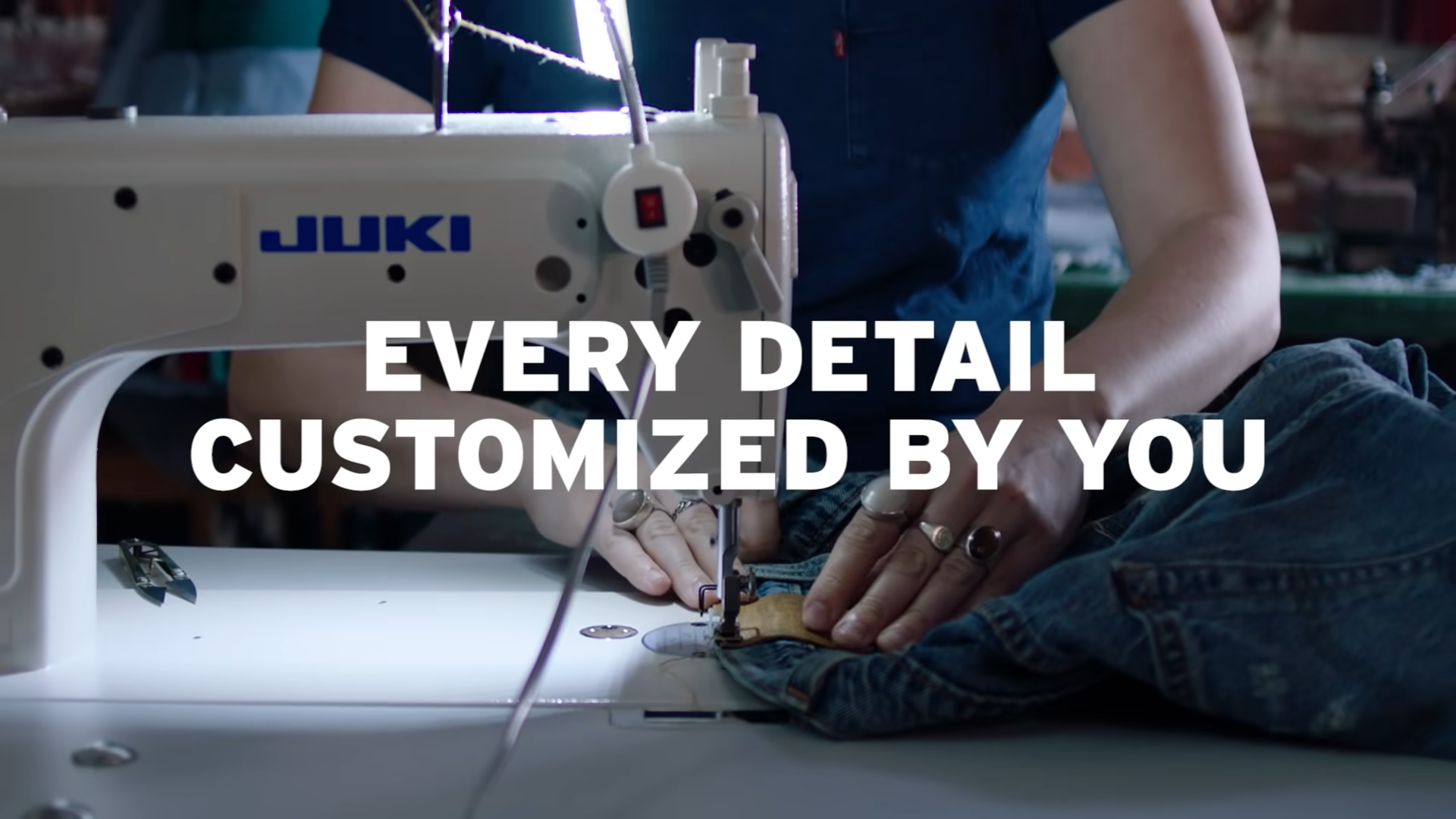
Consumers can choose an iconic Levi’s fit and then select from three different tints (midnight, black, or rose), six patterns (natural worn, bandana, logo, camo, or leopard), and add wear (rips or distressing). They can also swap leather back patches with different color options.
Customers have over 3,400 possible permutations to make the product truly their own.
So, why product customization?
Shoppers want to stand out. They want their purchases to come with a sense of exclusivity and uniqueness. They are even willing to pay more for an exclusive product.
Deloitte researched the spending habits of millennials. According to a study, more than 70% of US-based respondents said they’d be willing to pay more for personalized service.
If you look beyond digits, product customization is a good opportunity to enhance customer experience and improve brand loyalty.
When you are just starting out, customer experience is your best differentiator. With product customization, you cater to your customers’ unique demands by giving them exactly what they want. The result gives them immense value and that is a great way to increase customer satisfaction.
Moreover, when customizing products, users will surely spend more time on your website. As shown in the below image, this kind of customization engages your customers at a deeper level by offering them infinite options to design. The more the user engages, the higher the chances of conversion.
With PrintXpand, you can enable this level of product customization on your online store.
We offer a range of customization tools to help you elevate your product offerings..
First is our feature-rich product design tool that has everything to make your customers fall in love with the buying process. They can browse from a library of ready-made texts, images, and create personalized designs on any and every device.
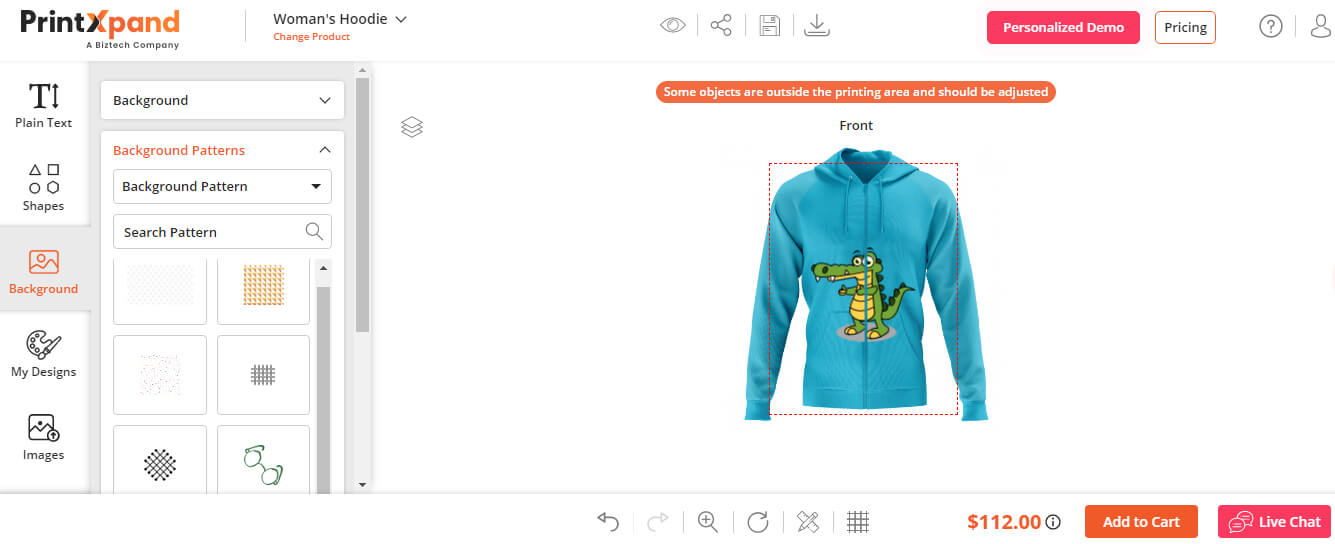
Second is our 3D Apparel Configurator: the perfect tool to enhance your online store’s customization features.
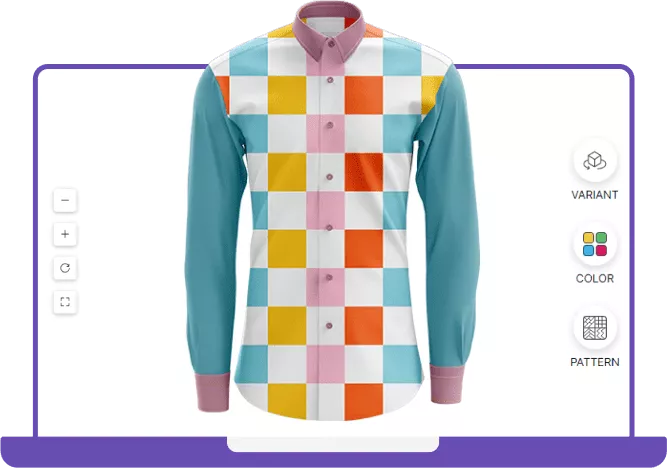
With its easy-to-use interface, real-time 3D preview, and full device compatibility, your customers can design their own shirts with ease from anywhere.
By providing a unique and engaging buying experience, you can increase customer satisfaction and ultimately drive more sales.
C. Create an eCommerce Website from Scratch
To sell custom clothing online, you need to choose the right eCommerce platform that ensures scalable and long-term growth. It is a tough decision given there are a lot of variables to consider.
To help you with this, we will compare some top eCommerce platforms – Shopify, WooCommerce, BigCommerce, Prestashop, and Magento.
Who tops the popularity contest?
According to numbers from BuildWiht.com, WooCommerce is currently the number one eCommerce technology with 23% overall followed by Shopify and Magento. Does this mean you should look no further and choose WooCommerce?
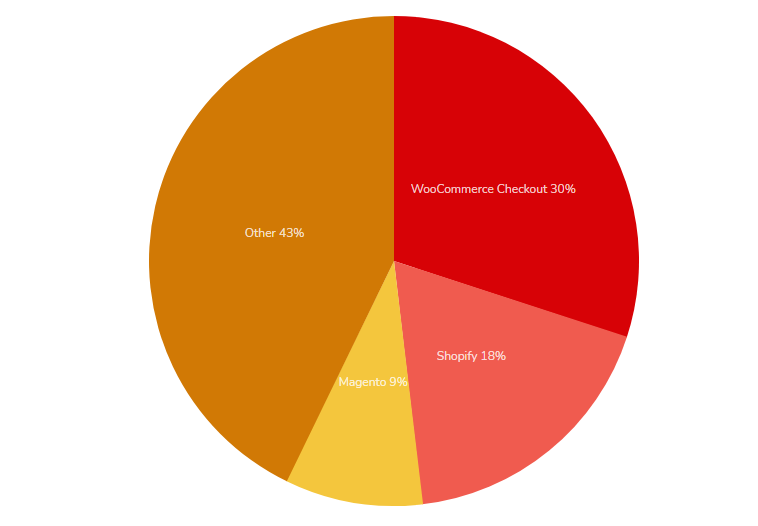
(Distribution for Websites Using eCommerce Technologies – Image Source)
Well, it tops the list, but that does not mean it is truly the best of all. For that, you need to compare all the platforms. For detailed analysis, you can visit the website of each platform. Meanwhile, this comparison chart might help you.
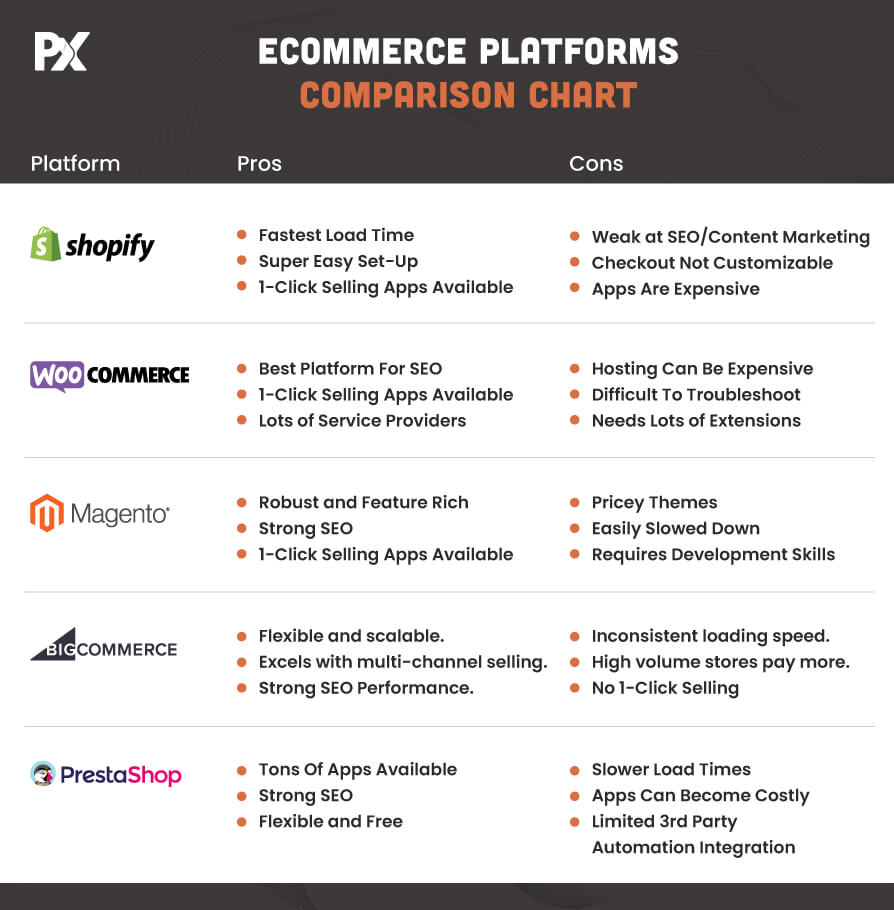
Building a website from scratch requires a lot of effort. Once you decide on the platform, you need to get your store ready by crafting a persuasive about us page, designing a simple and seamless checkout, adding product details, and more.
If you need any assistance in creating your dream store with a Design Tool integrated, we are just a click away!
3. Select Your Print Partner
The way you choose to print the products and ship them to your customers is up to you. These are the three most common options that you can consider to sell custom apparel online.
1. Set Up a Printing & Logistics Infrastructure
Managing printing and shipping on your own means you get complete control over your store. To print and sell custom clothing online, you have two options. One, you set up the entire printing infrastructure by investing in inks and printing machines. Or you can partner with a local printer who will take care of the printing process.
If you chose to go with the first option, you would need to decide on a printing method. Currently, there are three popular methods for printing apparel – screen printing, heat transfer, and direct-to-garment. Each has its pros and cons; therefore, detailed research will help you choose the best.
For shipping too, if you are planning to do it yourself, you will need to keep stock of the products and manage packaging.
No doubt you get complete freedom, but that comes with a price. You are likely to spend more than the required time in managing printing/packaging, that you might not be able to focus on what’s more important – driving traffic to your store.
2. Work with Third-Party Fulfillment Partners
If you do not want to worry about storage, supply, or working with print machines, this option is good. Third-party fulfillment partners here are print-on-demand services.
Print-on-demand is where you work with a supplier to customize white-label products to customize your designs to sell on a pre-order basis. So, unlike a traditional printing company that will print products of the same design in bulk, a print-on-demand company would print only when an order comes in.
Additionally, the print-on-demand service will handle everything from packaging, to order fulfillment. Some best print-on-demand services you can choose from are – Printful, Printify, Aura, Zazzle.
One of the biggest advantages of this approach is that you can experiment by adding new styles, designs, or variants since you do not hold the inventory. On the other hand, you have little control over the shipping cost.
3. Partner with a Dropshipper
In this model, you do not store the products. Dropshipping is the act of selling the product on your website without handling shipping and fulfillment. Here’s how you can sell custom clothing online with the dropshipping model
- Customers place an order on your eCommerce website.
- Your online store automatically passes the order information to the drop-shipper.
- The dropshipping supplier prepares the product, packs it, and ships it directly to the customer.
The drop-shipper charges you for the product sold – wholesale + dropshipping fee. In addition to eliminating the need for inventory storage, this model also reduces the risks of inventory errors. This means you need not worry about overstock or shortages.
One of the biggest reasons that makes dropshipping a popular choice among retailers is the eCommerce business owner only pays the drop-shipper when the customer does.
4. Drive Traffic on Your Store
Putting up a website and getting your online store ready is only half the work. If you want to create and sell clothes online you need to get the word out about your brand. This section covers some marketing tactics from experts that will help you drive online sales.
Tip 1: Power of Social Media – Dionna Dorsey, District of Clothing
“We want to make sure people feel and know they are part of the brand. We post pictures of actual customers wearing our shirts, and we integrate that with positive messaging and storytelling. We truly live and breathe our “dream and do” lifestyle – our message is authentic, and so are our customers, so it resonates.”
There is a good marketing lesson to learn from District of Clothing that we talked about earlier in this post. The brand does an excellent job on social media. They use Instagram to share their story.
Social media platforms continue to provide support for brands to market their products and connect with the audience. A strong social media presence will help you drive traffic to your online store. The following three points will help you drive better results:
- Consistency in posting.
- Posting at an optimal time that gets the most attention.
- Use insight tools to check how your profile/page is performing.
Tip 2. Focus on SEO Basics – Ryan Stewart, The Blueprint Training
“Too many people in this industry waste time and resources chasing shiny objects. There are no silver bullets. SEO is all about putting in the time and dedicating resources to getting things done. Keyword research, website speed, content generation, and link building are all things that require time and attention. There are no shortcuts.”
Search engine optimization takes time. But if done right, the results will not disappoint you. The best eCommerce SEO strategy includes:
- Keyword research will help you find the types of keywords customers are searching.
- Site architecture based on your keyword research.
- Technical SEO to ensure search engines can crawl your site efficiently.
- Content marketing will help in driving additional organic visitors.
- Link Building to improve the authority of your website.
Tip 3. Create User-centric Content – Ann Handley, MarketingProfs
“My general advice is: Create user-centric content that answers the questions your prospects have, and that makes them feel like you understand their problems, shoulder their burdens along with them, and feel their pain.”
That’s when creating buyer personas help. A buyer persona is a semi-fictional representation that embodies the characteristics of your potential customers. It helps you know what they think and align your strategy as per their needs.
Over to You
Online shopping is growing so fast that the online retail sales are expected to reach $6.51 trillion in 2023.
In 2022 alone, there were 268 million online shoppers in the United States, and the fashion e-commerce industry accounted for roughly 23% of total online retail sales.
This means that it is the right time to create and sell clothes online.
In a competitive landscape, what makes your store outshine others is providing personalized experiences to your customers. When you give customers the power to create a product for themselves, you make the shopping experience more personal and intriguing. That way, customers connect with you, in turn resulting in brand growth.
Whether you need assistance in building an eCommerce shop or leveraging customization, we can guide you. PrintXpand offers a complete Web-to-Print software solution developed by ecommerce industry experts with 14+ years of experience. We provide support for launching ready-to-sell B2B & B2C Web-to-Print storefront for both established businesses and startups. Additionally, our online product design tool helps businesses like yours turn an eCommerce store into a creative hub.
Share your business requirements with us, and we will help you find a solution that suits your needs. Just drop us a message, and we will get in touch with you!
